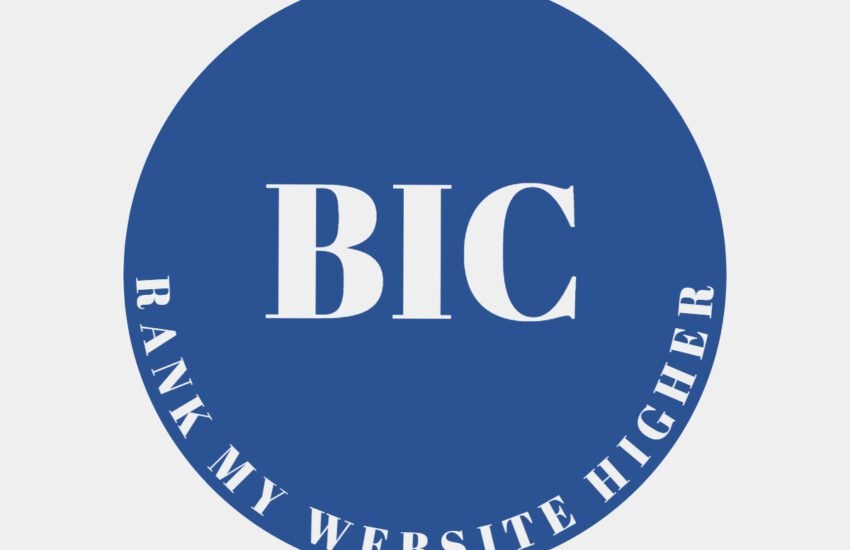21 SEO Strategies to Implement Immediately on Your Blog
- Why do SEO?
- 21 SEO Strategies to Implement Immediately
- 1. Understand Your Audience
- 2. Keyword Research
- 3. Create High-Quality Content
- 4. Optimize Title Tags
- 5. Write Compelling Meta Descriptions
- 6. Optimize Heading Tags
- 7. Optimize Images
- 8. Internal Linking
- 9. External Linking
- 10. Mobile-Friendly Design
- 11. Page Speed Optimization
- 12. Secure Your Website with HTTPS
- 13. Create an XML Sitemap
- 14. Submit Your Sitemap to Search Engines
- 15. Monitor Your Website’s Performance
- 16. Optimize for Local SEO
- 17. Encourage User Engagement
- 18. Regularly Update Your Content
- 19. Build Quality Backlinks
- 20. Optimize for Featured Snippets
- 21. Stay Up-to-Date with SEO Trends
- Conclusion
Why do SEO?
There are so many blogs on the internet and obviously getting your website noticed can be a big challenge. That’s where SEO comes in.
SEO, or Search Engine Optimization, helps your website rank higher in search engine results, like Google or Bing. Why is this important? Well, think about how you find information online.
You probably type a few words into a search engine and click on one of the first few results, right? That’s what most people do.
So, if your website isn’t showing up near the top of those results, chances are, people won’t find it. And if people can’t find your website, they can’t learn about your business, read your content, or buy your products.
That’s why SEO is crucial—it helps your website get more visibility, attract more visitors, and ultimately, grow your online presence.
21 SEO Strategies to Implement Immediately
Whether you’re a small business owner, a blogger, or anyone else with a website, understanding and implementing SEO strategies can make a big difference in your online success.
Here are 21 strategies to implement immediately.
1. Understand Your Audience
Knowing your audience helps tailor your content to their needs.
By understanding their demographics, interests, and pain points, you can create content that resonates with them.
This increases the likelihood of your content being discovered and shared, ultimately improving your website’s visibility in search engine results.
2. Keyword Research
Keyword research involves identifying the terms and phrases your audience uses when searching for information related to your website.
By targeting relevant keywords with high search volume and low competition, you can optimize your content to rank higher in search engine results pages (SERPs).
This drives organic traffic to your site from users actively seeking the information you provide.
3. Create High-Quality Content
High-quality content is informative, engaging, and valuable to your audience.
It addresses their questions and provides solutions to their problems, positioning you as a trusted authority in your niche.
Search engines prioritize high-quality content in their rankings, so creating valuable content improves your chances of ranking well and attracting organic traffic.
4. Optimize Title Tags
Title tags are HTML elements that define the title of a web page. They appear as clickable headlines in search engine results and browser tabs.
Optimizing title tags involves accurately summarizing the content of your page while incorporating relevant keywords.
This helps search engines understand the topic of your page and improves its visibility in SERPs, increasing the likelihood of users clicking through to your site.
5. Write Compelling Meta Descriptions
Meta descriptions are brief summaries of a web page’s content displayed beneath the title tag in search engine results.
While they don’t directly impact rankings, compelling meta descriptions can influence click-through rates.
By writing descriptive, persuasive meta descriptions that highlight the benefits of visiting your page, you can attract more clicks from search engine users, ultimately driving traffic to your site.
6. Optimize Heading Tags
Heading tags (e.g., H1, H2, H3) structure the content of your web pages, making it easier for users to read and understand.
Search engines use heading tags to better comprehend the hierarchical structure of your content and prioritize important information.
By using relevant keywords in your heading tags and organizing your content logically, you can improve your page’s SEO and enhance the user experience.
7. Optimize Images
Optimizing images involves using descriptive filenames and alt attributes to provide context for search engines and visually impaired users.
Search engines can’t interpret images directly, so descriptive filenames and alt text help them understand the content and purpose of your images.
Additionally, optimized images improve the accessibility of your website and may appear in image search results, driving additional organic traffic.
8. Internal Linking
Internal linking involves linking to other pages within your website’s content.
This not only helps users navigate your site but also distributes link equity (ranking power) throughout your site, improving the visibility of all your pages in search engine results.
By strategically linking to related content, you can guide users to additional resources and encourage them to explore more of your site, ultimately enhancing the user experience and SEO performance.
9. External Linking
External linking involves linking to reputable websites outside of your own.
While it may seem counterintuitive to send traffic away from your site, external links can provide valuable context and resources for your audience.
Additionally, linking to authoritative sources can help establish credibility and trustworthiness, both of which are important factors for SEO.
Just be sure to link to relevant and high-quality websites that add value to your content and user experience.
10. Mobile-Friendly Design
With the increasing prevalence of mobile devices, having a mobile-friendly website is essential for SEO.
Mobile-friendly design ensures that your site displays properly and functions smoothly on smartphones and tablets, providing a positive user experience regardless of the device used.
Google considers mobile-friendliness as a ranking factor, so optimizing your site for mobile devices can improve its visibility in mobile search results and attract more organic traffic.
11. Page Speed Optimization
Page speed refers to how quickly your web pages load, and it directly impacts user experience and SEO.
Slow-loading pages frustrate users and increase bounce rates, which can negatively affect your site’s rankings in search engine results.
To improve page speed, optimize images, minify CSS and JavaScript files, leverage browser caching, and use a content delivery network (CDN).
By prioritizing page speed optimization, you can enhance the user experience, reduce bounce rates, and improve your site’s SEO performance.
12. Secure Your Website with HTTPS
HTTPS (Hypertext Transfer Protocol Secure) encrypts data transmitted between a user’s browser and your website, ensuring a secure connection.
In addition to protecting user data, HTTPS is a ranking factor in Google’s algorithm. Websites with HTTPS encryption receive a slight ranking boost, giving them a competitive edge in search engine results.
By migrating your site to HTTPS and implementing SSL/TLS certificates, you can improve your site’s security, user trust, and SEO visibility.
13. Create an XML Sitemap
An XML sitemap is a file that lists all the pages on your website, along with metadata about each page (e.g., last modified date, priority).
Submitting an XML sitemap to search engines like Google helps them crawl and index your site more efficiently, ensuring that all your pages are discovered and included in search results.
By providing search engines with a roadmap of your site’s structure, you can improve the visibility and accessibility of your content, ultimately driving more organic traffic to your site.
14. Submit Your Sitemap to Search Engines
After creating an XML sitemap for your website, it’s essential to submit it to search engines like Google and Bing through their respective webmaster tools.
By submitting your sitemap, you notify search engines of your site’s existence and provide them with valuable information about your content and site structure.
This facilitates the crawling and indexing process, helping search engines discover and rank your pages more effectively.
By regularly submitting updated sitemaps, you ensure that search engines have the most current information about your site, maximizing its visibility and potential for organic traffic.
15. Monitor Your Website’s Performance
Monitoring your website’s performance is crucial for understanding how users interact with your site and identifying areas for improvement.
Google Analytics provides valuable insights into user behavior, traffic sources, and conversion metrics, allowing you to track the effectiveness of your SEO efforts.
Google Search Console offers additional data on your site’s visibility in search results, including keyword rankings, indexing issues, and crawl errors.
By regularly analyzing these metrics and making data-driven decisions, you can optimize your website for better performance, user experience, and SEO results.
16. Optimize for Local SEO
Local SEO focuses on optimizing your website to attract local customers and improve your visibility in local search results.
This is especially important for businesses with physical locations or service areas. To optimize for local SEO, include your business name, address, and phone number (NAP) on your website and in online directories like Google My Business.
Additionally, solicit online reviews from satisfied customers and create locally relevant content targeting specific geographic areas.
By optimizing for local SEO, you can increase your chances of appearing in local search results, attract more foot traffic to your business, and drive organic traffic from local customers.
17. Encourage User Engagement
User engagement refers to how users interact with your website and its content.
Engaged users are more likely to spend time on your site, explore multiple pages, and take desired actions (e.g., making a purchase, filling out a form).
To encourage user engagement, create compelling and interactive content, such as blog posts, videos, quizzes, and polls. Prompt users to leave comments, share content on social media, and subscribe to your email list.
By fostering meaningful interactions with your audience, you can increase user engagement, build brand loyalty, and improve your site’s SEO performance.
18. Regularly Update Your Content
Keeping your website’s content fresh and up-to-date is essential for maintaining its relevance and SEO performance.
Regularly publishing new content and updating existing content signals to search engines that your site is active, authoritative, and worthy of being crawled and indexed.
Additionally, updating outdated content with fresh information, statistics, and insights can improve its value to users and increase its visibility in search results.
To stay ahead of the competition, conduct periodic content audits to identify gaps, opportunities, and areas for improvement.
By prioritizing content updates and publishing new content consistently, you can enhance your site’s SEO, attract more organic traffic, and keep your audience engaged and informed.
19. Build Quality Backlinks
Backlinks are links from other websites to your site, and they play a crucial role in SEO. Search engines view backlinks as votes of confidence or trust signals, indicating that other websites find your content valuable and worth linking to.
However, not all backlinks are created equal. Quality backlinks from authoritative, relevant websites carry more weight and have a greater impact on your site’s SEO performance.
To build quality backlinks, create high-quality content that naturally attracts links from other sites, such as blog posts, infographics, and case studies.
Additionally, reach out to influencers, bloggers, and webmasters in your niche to request backlinks or guest posting opportunities.
By building a diverse portfolio of quality backlinks, you can improve your site’s authority, trustworthiness, and visibility in search engine results.
20. Optimize for Featured Snippets
Featured snippets are special search results that appear at the top of Google’s SERPs, providing concise answers to user queries.
Optimizing your content for featured snippets increases your chances of appearing in this coveted position, driving more organic traffic to your site. To optimize for featured snippets, identify common user questions related to your niche and create content that directly answers these questions in a clear, concise format.
Use headers, bullet points, and structured data markup to organize your content for easy extraction by search engines.
Additionally, target long-tail keywords with informational intent, as they are more likely to trigger featured snippet results.
By optimizing your content for featured snippets, you can enhance its visibility, attract more organic traffic, and establish your site as an authoritative source of information in your niche.
21. Stay Up-to-Date with SEO Trends
SEO is constantly evolving as search engines update their algorithms and user behaviors change.
Staying informed about the latest SEO trends, updates, and best practices is essential for maintaining your site’s visibility and competitiveness in search engine results.
Follow reputable SEO blogs, forums, and industry publications to stay abreast of the latest developments and insights.
Participate in online communities and attend industry events to network with fellow professionals and exchange ideas. Additionally, experiment with new SEO strategies and tools to see what works best for your website and audience.
By staying up-to-date with SEO trends, you can adapt to algorithm changes, anticipate emerging trends, and position your site for long-term success in organic search.
Conclusion
Implementing effective SEO strategies is essential for anyone looking to succeed online.
By optimizing your website to rank higher in search engine results, you can increase visibility, attract more visitors, and ultimately achieve your goals, whether that’s driving sales, gaining subscribers, or sharing valuable information.
Remember, SEO is not a one-time task but an ongoing process that requires attention and adaptation to changing trends and algorithms.
By staying informed, staying proactive, and staying committed to providing valuable content for your audience, you can continue to improve your website’s performance and reap the benefits of increased organic traffic.
So, whether you’re just starting out or looking to enhance your existing online presence, prioritize SEO as a fundamental part of your digital strategy, and watch your website soar to new heights.


